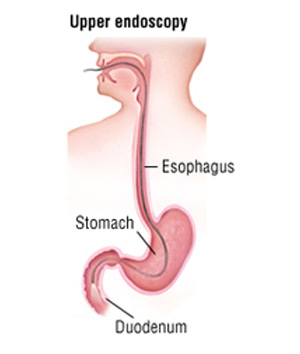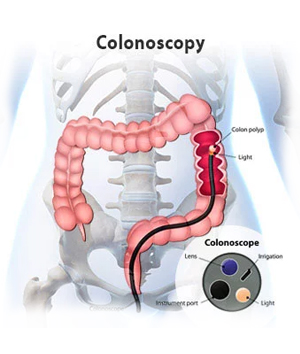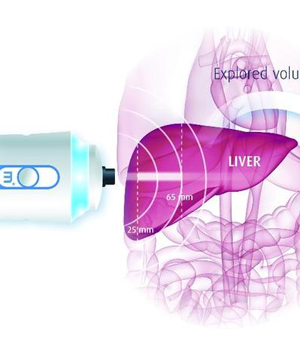Gastroenterology Department

1. Endoscopy
An endoscopy is a procedure where the inside of your body is examined using an instrument called an endoscope.
Endoscopy is a nonsurgical procedure used to examine a person's digestive tract. Using an endoscope, a flexible tube with a light and camera attached to it, your doctor can view pictures of your digestive tract on a color TV monitor.
During an upper endoscopy, an endoscope is easily passed through the mouth and throat and into the esophagus, allowing the doctor to view the esophagus, stomach, and upper part of the small intestine.
Similarly, endoscopes can be passed into the large intestine (colon) through the rectum to examine this area of the intestine. This procedure is called sigmoidoscopy or colonoscopy depending on how far up the colon is examined.
A special form of endoscopy called endoscopic retrograde cholangiopancreaticography, or ERCP, allows pictures of the pancreas, gallbladder, and related structures to be taken. ERCP is also used for stent placement and biopsies.

2. ERCP
ERCP is a procedure that enables your physician to examine the pancreatic and bile ducts. A bendable, lighted tube (endoscope) about the thickness of your index finger is placed through your mouth and into your stomach and first part of the small intestine (duodenum). In the duodenum a small opening is identified (ampulla) and a small plastic tube (cannula) is passed through the endoscope and into this opening. Dye (contrast material) is injected and X-rays are taken to study the ducts of the pancreas and liver.
WHY IS AN ERCP PERFORMED?
ERCP is most commonly performed to diagnose conditions of the pancreas or bile ducts, and is also used to treat those conditions. It is used to evaluate symptoms suggestive of disease in these organs, or to further clarify abnormal results from blood tests or imaging tests such as ultrasound or CT scan. The most common reasons to do ERCP include abdominal pain, weight loss, jaundice (yellowing of the skin), or an ultrasound or CT scan that shows stones or a mass in these organs.
ERCP may be used before or after gallbladder surgery to assist in the performance of that operation. Bile duct stones can be diagnosed and removed with an ERCP. Tumors, both cancerous and noncancerous, can be diagnosed and then treated with indwelling plastic tubes that are used to bypass a blockage of the bile duct. Complications from gallbladder surgery can also sometimes be diagnosed and treated with ERCP.
In patients with suspected or known pancreatic disease, ERCP will help determine the need for surgery or the best type of surgical procedure to be performed. Occasionally, pancreatic stones can be removed by ERCP.

3. Colonoscopy
A colonoscopy is an exam your doctor uses to look inside your large intestine for possible causes of things like abdominal pain, rectal bleeding, or changes in bowel habits. Colonoscopies are also used to prevent colorectal cancer usually starting at age 50. During a colonoscopy abnormal growths, called polyps, can be removed before they transform into cancers.
Different bowel preps may contain different combinations of laxatives—pills that you swallow or powders that you dissolve in water or clear liquids. Some people will need to drink a large amount, often a gallon, of liquid laxative over a scheduled amount of time—most often the night before and the morning of the procedure. Your doctor may also prescribe an enema.
The bowel prep will cause diarrhea, so you should stay close to a bathroom. You may find this part of the bowel prep hard; however, finishing the prep is very important. Call a health care professional if you have side effects that keep you from finishing the prep.
Your doctor will tell you how long before the procedure you should have nothing by mouth.

4. Fibroscan
Fibroscan is a non-invasive test that helps assess the health of your liver. Specifically, it uses ultrasound technology to determine the degree of fibrosis or scarring that may be present in your liver from various liver diseases or conditions. This information is then used by your gastroenterologist to individualize and optimize your treatment plan. For some patients, Fibroscan can replace liver biopsy. FibroScan test results are always used in conjunction with other clinical data, laboratory test results, and liver imaging in managing individual patients.
What is Fibroscan ?
It is a device used to assess degree of scarring or damage to liver.
For which liver conditions can Fibroscan be used ?
- Hepatitis C
- Hepatitis B
- HCV-HIV co-infection
- Hepatitis C recurrence after liver transplantation
- Non Alcohol Fatty Liver Disease
- Alcohol
- Chronic cholestatic diseases
- Fatty liver
- Raised sgot and sgpt
- Diabetes
- Obesity
- Deranged lipid profile

What does the Fibroscan examination consist of ?
- You lie on your back, with your right arm raised behind your head. Physician applies a water-based gel to the skin and places the probe with a slight pressure.
- The examination includes 10 consecutive measurements made at the same location.
- During measurement, you feel a slight vibration on the skin at the tip of the probe.
- The result is delivered at the end of the examination, it's a number which can very from 1.5 to 75 kPa. Your doctor will interpret the result.
What are the benefits ?
- The result is immediate,
- It is non-invasive, therefore painless
- It shows the evolution of the liver health and allows physicians to diagnose and monitor disease evolution regardless of treatment or collateral factors.
- Exam result helps to anticipate various complications, as well as to monitor and assess the damages caused by diseases such as cirrhosis.
- Examination can be repeated as necessary to minitor liver condition.
When is Fibroscan examination not possible?
- On any other organ than the liver.
- On patient with active implantable devices such as pacemakers, defibrillators, pumps.
- On wounds